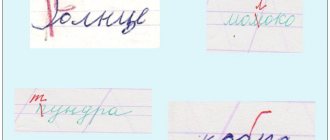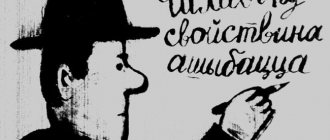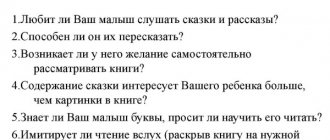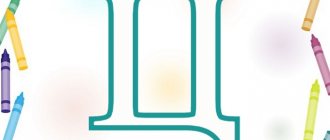Game-Exercise No. 1. Work on memorizing words and terms (their graphic version)
Make up vocabulary words (or terms, for adult listeners) from syllables, circle them in different colors.
Speech material for first-graders: alphabet, crow, law, came in, they are calling, textbook, teacher, glue, carpet.
Speech material for cadets and listeners on terminology (example): analysis, synthesis, verification, safety, accident, gaff, car pump, liquidation, arson.
! If possible, use word breakdowns or insert pictures and other visual cues to enhance comprehension.
Dysgraphia
- Specially selected speech material is also used to practice problem areas in writing and exercises for correction:
1. Clap or tap out the word syllable by syllable and name their number.
2. Be able to identify vowel sounds in a word, learn the basic rule of syllabic division: there are as many syllables in a word as there are vowel sounds.
3. Be able to isolate a vowel sound from a syllable and word. Determine the vowel sound and its place in the word (beginning, middle, end of the word).
4. Name the vowels in the word.
5. Write down only the vowels of the given word.
6. Select vowel sounds and find the corresponding letters.
7. Repeat the word syllable by syllable. Count the number of syllables.
8. Determine the number of syllables in the named words. Raise the corresponding number.
9. Write down the words in two columns (split the pictures into 2 groups) depending on the number of syllables.
10. Select the first syllable from the names of the pictures and write it down.
11. Combine syllables in a word, sentence, read the resulting word or sentence (for example: “beehive”, “house”, “car”, “moon”, “toad”). After highlighting the first syllables, the sentence is obtained: There is a puddle near the house.
12. Identify the missing syllable in a word using a picture:
__buzz, ut__, lod__, ka__, ka__dash.
13. Compose a word from syllables given in disorder (nok, tsyn, las, toch, forest, ka).
14. Find words in a sentence with a certain number of syllables.
Game “Guess who I'm calling?”
Goal: developing the ability to select words with a given number of syllables.
The teacher invites those children whose names consist of as many syllables to stand up as he claps.
For example: the teacher claps 3 times, the students count, then stand up (Se-ryo-zha, A-ri-na).
Game “Changes”.
Goals: development of the ability to compose words; accumulation of syllable images in memory.
Equipment: cards with syllables (4–6) for each player.
The teacher names two syllables, the children find cards with these syllables and first compose one word, then, rearranging the syllables, another: sos, na; tea. CA; spring; kA, mouse; jar; la, ska”ni, tka; ra. But; Which.
Game “Chain”.
Goal: developing the ability to select words based on one given syllable.
One of the students writes a word on the board syllable by syllable, the next one selects a word that begins with the next syllable of the given word (ok-no, no-ra, ra-ma).
Game “If I meet a word on the road, I’ll break it into syllables.”
Goal: development of syllable skills, attention, speed of thinking.
The teacher throws a ball to the children and names one-, two- and three-syllable words. The child who catches the ball determines the number of syllables, names them and passes the ball back. You can invite children to pronounce the word syllable by syllable while simultaneously hitting the word with a ball.
Game "Name of a fairy-tale character"
Goal: improving the skills of syllabic analysis and synthesis.
Objectives: develop phonemic hearing; Exercise students in the ability to divide words into syllables.
Equipment: cards with a set of words.
Fairy tale character name
Game-Exercise No. 2. We work on word order to help the child/adult understand the text.
Option for children.
Adding one word at a time, make sentences based on the picture. Be sure to ensure that your child follows word order.
Picture for the exercise
LENA IS RIDING.
____ _____ on ________
____ _____ us____.
_____ _____ us ____ ____.
Option for adult learners.
The rules of the game are simple, but you will need some equipment - special cards. In general, there is a real game, it is called Dixit, but not everyone can afford to buy it. Therefore, you can create some of its elements yourself. The bottom line is this: players are dealt six cards. They depict various pictures - almost surrealism.
For example , a rickety anchor in the middle of the desert.
Example of cards for the game
The essence of the exercise game
- What associations come to mind?
- They need to be formulated in one phrase - and voiced by others.
- The main condition: the phrase must be constructed in compliance with the word order. Inversion and illogicality are unacceptable.
- Players select a suitable card from their set according to the description and place it on the table.
The secret is that the description must be multifaceted, and the one whose card is not immediately guessed wins.
- But, the important element is that if no one could identify your card at all, you lose points.
- By the way, the cards themselves, or rather the pictures, can be found and printed from the Internet at home.
What mistakes does a child with optical dysgraphia make?
Children with optical writing disorders most often have difficulty transferring letters onto paper in the correct form. They distort the appearance of letter characters or write them in mirror images. Schoolchildren cannot write letters correctly, so they unintentionally add extra loops or details to them, or lose the necessary components of the characters.
Experts say that most often optical-type dysgraphics make the following specific errors:
- Substitution of letters consisting of identical elements in different quantities (hooks, circles, etc.). Most often in writing these are the letters sh-i, r-y, m-l, t-p. for example: neck - eeya, rag - pyapka, coin - loneta.
- Replacing letters with similar spellings that have different locations of individual symbol elements. In written form, these are letters such as b-u, v-d, sh-t. for example: booth - fishing rod, cleaning - buorka, schoolboy - tkolnik, fork - dilka.
- Loss and failure to complete the components of letters. Most often, hooks are lost in the capital characters y and d, ticks in the letters b, a, etc. for example: Anton - Λton.
- Writing letters in their mirror image. The characters are written correctly, but in the wrong direction. Very often this type of mistake is made by left-handed people. For example: Ekaterina - Zkaterina.
It is extremely important to remember that the student does not make such mistakes intentionally, and the reason here does not lie in his laziness, reluctance or irresponsibility. Most often, the child takes learning extremely seriously, however, neither his efforts nor the extra time devoted to writing bring the desired result.
Forecast, preventive measures
The prognosis for the treatment of dysgraphia depends on a number of factors: the timeliness of the measures taken, the severity of the deviation, its form, the reasons that provoked the formation of the written speech disorder, as well as the individual characteristics of the patient. Only through the well-coordinated work of specialists, the patience and perseverance of parents, as well as the positive attitude of the child, can a positive result be obtained in the end. The problem associated with impaired written speech can be completely corrected in more than 80% of cases.
Parents of a child who has been diagnosed with dysgraphia should be aware that the lack of a timely response can lead in the future to:
- Poor academic performance, which is fraught with intellectual retardation in the development of the child.
- The appearance of suspiciousness and anxiety.
- The emergence of problems with peers.
In addition, an advanced form of dysgraphia is the cause of a child’s deviant behavior and low self-esteem.
For a child with an advanced form of dysgraphia, the need to write something will always cause discomfort. This leads not only to poor academic performance, but also to a complete lack of desire to learn and master new material.
Symptoms and manifestations of dysgraphia
It is difficult to establish an accurate diagnosis of dysgraphia without a specialist. Usually, its presence becomes known at school age, when the child writes letters incorrectly. This is often confused with the fact that the child simply does not understand the grammar of the language, for which teachers reduce grades, therefore, the performance of such a child worsens.
Errors due to dysgraphia have nothing to do with mastering the rules of the Russian language. The errors themselves are the same, but numerous. Most often, the child makes mistakes when writing combined/separate words; syllables or letters are omitted. Such symptoms should cause concern for parents and teachers at school. Dysgraphia in schoolchildren requires special correctional work from specialists; the sooner such work is started, the faster the child gets rid of it.
Dysgraphia in schoolchildren can also cause poor handwriting that is incomprehensible to adults. Children with this disorder have slow writing speed and severe unevenness. The height and width of letters are constantly changing, even in one word.
Prevention of dysgraphia
Experts cannot name the exact causes of dysgraphia. In addition, it is believed that such a violation of written speech cannot be prevented. However, there are known risk groups whose representatives more often suffer from the presence of such a deviation. This:
- Bilingual children;
- Patients with mental retardation
- Children who were retrained to write with their right hand
- Hyperactive children
- Children who started learning too early
Prevention measures include training memory and attentiveness, increasing vocabulary. It is important to know that if a child constantly makes the same mistakes when writing words, there is no need to postpone visiting a speech therapist until later. If a child has a written speech disorder, the sooner correctional work is started, the faster and easier it will be to get rid of the problem, which is fraught with serious consequences for the child in the future.
Methods for correcting dysgraphia
The method of correction depends on the severity of the child’s written language impairment. In addition, the method of treating the deviation is influenced by the degree of neglect, as well as the characteristics of the patient. Correction is a long and complex process that requires persistence on the part of teachers and parents, patience, endurance and a positive attitude of the patient. If you follow all the necessary recommendations, dysgraphia can be completely cured. It is better if the disorder is diagnosed at an earlier age, since the course of correction for older schoolchildren is longer due to the presence in most cases of additional speech and writing disorders. In this case, the time required for rehabilitation will take more. There is also a high risk that the violation cannot be eliminated completely.
It is impossible to get rid of dysgraphia on your own. This process requires the participation of many highly specialized specialists, for example, a psychologist, a neuropsychologist. However, the main work falls on the speech therapist, who will have to select a rehabilitation program appropriate to the severity of the disease and the individual characteristics of the patient. The specialist individually selects the necessary sound pronunciation exercises. Classes are aimed at improving motor skills, developing the patient’s lexical and grammatical structure, as well as improving phonemic speech recognition.
Methods for correcting dysgraphia, which are among the most effective:
- Exercises through which the patient learns to correctly understand sounds, words, and letters.
- Tasks aimed at training memory, improving thinking, and developing perception.
- Exercises necessary for the patient to learn to correctly recognize letters that are similar in appearance.
- Proper production of sounds, work on speech automation.
- Educational games to improve sound analysis.
In some cases, specialists include drug treatment, physiotherapy, massage, and exercise therapy in the rehabilitation course. This often applies to patients whose dysgraphia was caused by organic causes. It is important to know that drug treatment should be prescribed exclusively by a qualified specialist.
Speech therapy correction
Auditory differentiation of sounds is what needs to be achieved initially when treating dysgraphia. If a child cannot distinguish sounds, then further exercises will not be effective. The rehabilitation period is determined individually and depends on many factors. Classes with a speech therapist are possible both in a group with other children and individually. It depends on the wishes of the child and his parents.
During classes, the speech therapist gives the child verbal and visual exercises, as well as practical lessons, during which correctional work takes place.
Exercises you can do at home
Since it is impossible to get rid of dysgraphia on your own, experts, in addition to basic classes, recommend doing additional exercises at home to consolidate the results obtained with a speech therapist.
Exercises that can be done at home should also be agreed upon with a speech therapist. It is important that parents supervise the technique and regularity of classes. The simplest but most effective exercises that you can do at home with your parents include:
- Labyrinth. The child draws a line on a piece of paper, moving only his hand. You cannot make breaks or change the position of the sheet.
- Search for objects or pictures. The child searches for and paints the objects found.
- Exercises aimed at developing attention. The child must read the text and look for missing letters or words, writing them in the right places.
- Improved articulation. The child learns songs, rhymes, and tongue twisters.
- Logorhythmics.
To get a positive result as quickly as possible, home exercises should be performed regularly. This will significantly shorten the rehabilitation period.
Main types of dysgraphia
Based on the characteristics of written disorders, experts identify five main types of dysgraphia. Let's take a closer look at how each of them manifests itself.
Acoustic dysgraphia
The child pronounces words correctly and does not experience hearing difficulties, however, when displaying information on paper, he replaces letters with ones that sound similar to them. These can be vowels or consonants, voiced or unvoiced, hissing or whistling. The student may also have difficulty representing letters correctly in soft form.
For example: “dikdand” - “dictation”, “masina” - “car”, “syplenok” - “chicken”, as well as “lublu” - “love”, “frock coat” - “frock coat”.
Articular-acoustic dysgraphia
Problems with spelling words are the result of incorrect pronunciation. A child who has speech therapy defects and makes mistakes during a conversation cannot correctly transfer sounds onto paper. That is, as the student speaks, so he writes. Accordingly, if the baby has incorrect pronunciation, then the spelling will be the same. For example: “lyba” - “fish”, “labota” - “work”, “zayas” - “hare”, “sapka” - “hat”, “nasa skola” - “our school”.
Optical dysgraphia
The child has difficulty visually representing written characters. The student can assign additional details, loops, ticks or hooks to the letters, or lose the necessary elements. Mirror spelling of letters is also quite often observed, especially in cases where the student is left-handed.
Example: most often a child confuses the spelling of similar letters “i” - “sh”, “o” - “a”, loses elements of the symbols “” - “A” or displays them in a mirror image “E” - “Z”.
Diagnostic methods
Dysgraphia in primary schoolchildren is diagnosed by studying oral and written speech. Only after this can an appropriate correction be prescribed. It is also necessary to consult a neurologist, ophthalmologist, or ENT specialist. The degree of formation is determined by a speech therapist.
The examination of a child consists of several stages. First, the child’s vision and hearing and the state of the central nervous system are assessed. Next, an analysis of motor skills and articulation is carried out. It is important to consider whether you are left-handed or right-handed. It is important to analyze the phonetic mechanism, sound pronunciation, the child’s vocabulary, and literacy level. After this, a study of the patient's letter is carried out.
A child with dysgraphia rewrites written and printed letters, words, takes dictation, performs exercises using deformed sentences and other tasks. After this, taking into account all the information received, a speech therapist’s conclusion is issued with recommendations for correction.






